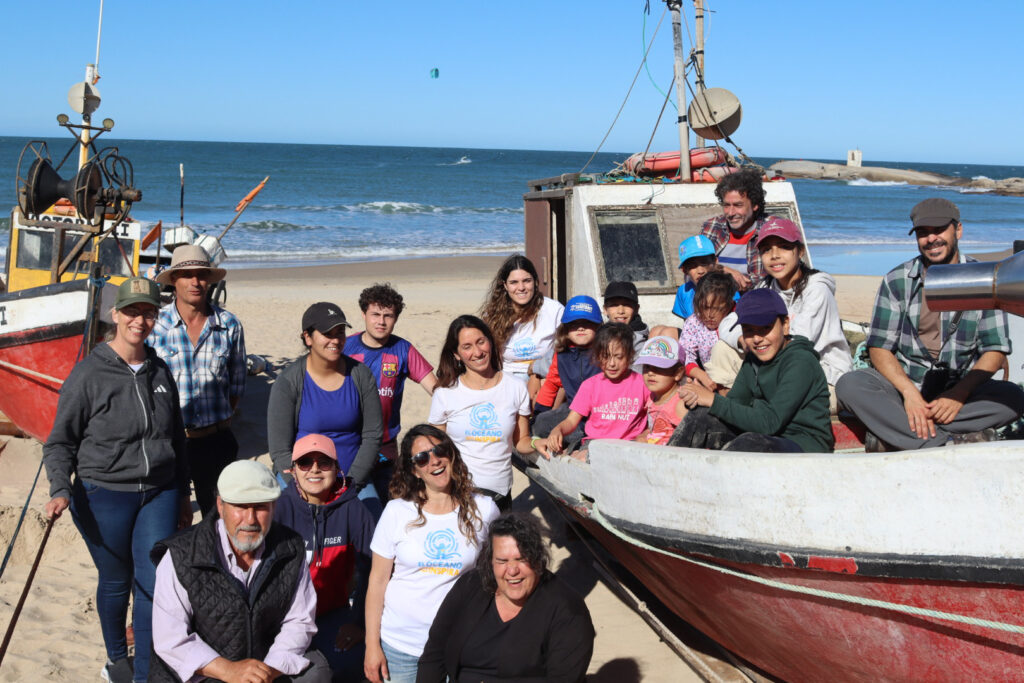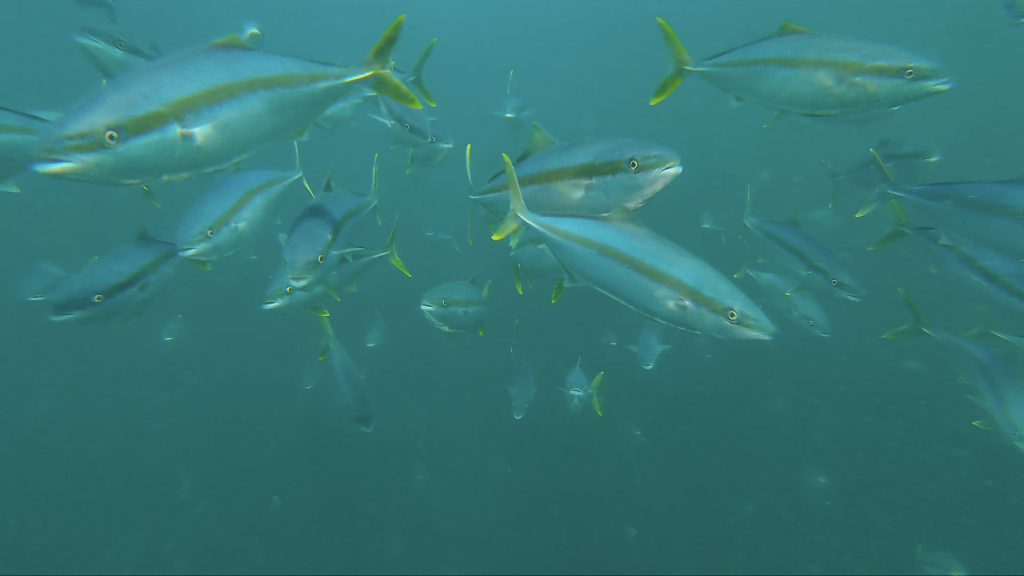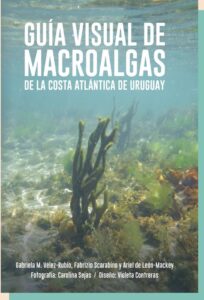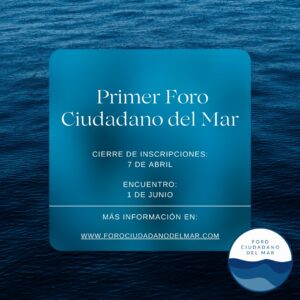Uniting scientists, citizens, fishers and school-children behind Uruguay’s quest for ocean protection
An update from Gaia’s Sacred Lands and Waters Lead, Fiona Wilton
There is nothing like surfing a wave to appreciate the vulnerability, beauty and extraordinary resilience of the sea – and to remind us that life on this planet depends on a healthy ocean. Every second breath we take comes from the ocean, and every bite of food we eat connects us to the sea.
“The sea, once it casts its spell, holds one in its net of wonder forever.” — Jacques Yves Cousteau
Going beneath the waves, however, and submerging into the world of fish, reefs and sea anemones, is not accessible for all. So how can we build empathy for marine life? How can we inspire and involve people in protecting the ocean? For our local partner in Uruguay, Mar Azul Uruguayo, it’s about relationship building and uniting behind common goals.
Connecting with the ocean

Sharing stories and videos, and introducing schoolchildren to the wonder and awe of the sea, can be a first step for ocean literacy. Under the umbrella of “The Ocean Inspires Us”, environmental educator Cinthia Toledo travels to primary schools in Uruguay, not only reaching out to children, but also to teachers and the communities in which these schools are immersed – and creating exchange opportunities. For the small school of Quebrada de los Cuervos (Ravine of the Crows), in the rural heartland of Uruguay, their visit to the coast left an indelible fascination with the ocean – thanks also to the stories and teachings of local fishers.
Revealing Underwater Beauty

This underwater image of pez limón is thanks to the collaboration of Darwin200, Mar Azul Uruguayo and Urumepa
Connecting up with Darwin200 Expedition and with Greenpeace International has resulted in the first-ever underwater images of the ‘Banco Pez Limón’ (Greater Amberjack Reef), one of the country’s priority areas for marine conservation. The generosity of captain and crew of the vessel Oosterschelde in using their ROV (Remotely Operated Underwater Vehicle), and the willingness of Greenpeace International to take marine scientists onboard their oceanic sailing yacht ‘Witness’, has provided some beautiful footage of the reef, teeming with Greater Amberjack (Pez Limón), Red Porgies and delicate soft corals. Aside from a delight for the eyes, the images and register of the different species provide valuable input for advancing in conservation measures for this unexplored reef area.
Making Macroalgae Visible

There is so much to explore and learn about under the waves, including seaweed – and Uruguay has more than 100 species of marine algae along its Atlantic coast. A stunning visual guide to macroalgae has just been reprinted and is available free of charge, thanks to Gabriela Vélez-Rubio, Fabrizio Scarabino and Ariel de León-Mackey, of local NGO Karumbé.
A tool for identifying the diversity of seaweed and the role of macroalgae in marine ecosystems, it includes some of the culinary uses too!
Tracking Current Conversations
As well as opening eyes to the underwater beauty of Uruguay’s sea, there’s a swell of activity around listening to voices for the ocean. The Foro Ciudadano del Mar (Citizen Forum on the Sea) is the first-ever initiative in Uruguay to enable citizen participation and discussion on issues related to the sea. Over the next three months, it will draw 100 people, young and old, from all over the country, to be better informed and have open discussion about marine issues and future plans for Uruguay’s sea. The Forum is led by Vida Silvestre Uruguay, a seasoned and experienced conservation NGO, in collaboration with the national university (UdelaR). Results will feed into the National Biodiversity Strategy and routemap on ocean governance.
Hidden Knowledge and Endangered Sharks
Whereas the Forum seeks to hear the views of all citizens, the voices and local knowledge of those whose lives depend on the sea, especially local fishers, is critical for policies on ocean governance. Three community researchers – Nazarena Beretta, Florencia Gonzalez and Manuela Acosta – along with marine biologist Andrés Milessi, have completed a pilot project, in partnership with Gaia, to understand better the situation of imperilled sharks and rays. Beautiful illustrations by Julia Rouaux will be part of a campaign ‘Peligrosos o En Peligro’ (Dangerous or Endangered). Our local partner Mar Azul Uruguayo plans to keep raising the voices and knowledge of small-scale fishermen, while building effective conservation measures and empathy for Uruguay’s threatened sharks and rays. You can see more from the video below (in Spanish):
¿PeligroSOS o en Peligro? from Mar Azul Uruguayo on Vimeo.
One of the young community researchers from this initiative, Manuela Acosta, was selected by Darwin200 as a youth conservation leader, and visited the stunning Brazilian islands of Fernando de Noronha, to learn more about conservation actions there for sharks and rays.
Advancing with a blue agenda
For those tasked with policy-making for Uruguay’s sea, the challenges are many: from illegal and unregulated fishing, to the lack of conservation measures for keystone and threatened species including sharks and rays. For those who like to criticise (there are always some!), it may seem that the pace of change, such as creating marine protected areas, is slow. But the success of Uruguay’s blue agenda (Uruguay Agenda Azul 2030) relies on collaboration, unity and a shared love for the sea.
Above the surface and below, the art is to restore oceanic kinship.
“Just as the sea is an open and ever flowing reality, so should our oceanic identity transcend all forms of insularity, to become one that is openly searching, inventive, and welcoming.” (We Are the Ocean, Epeli Hau’ofa)

